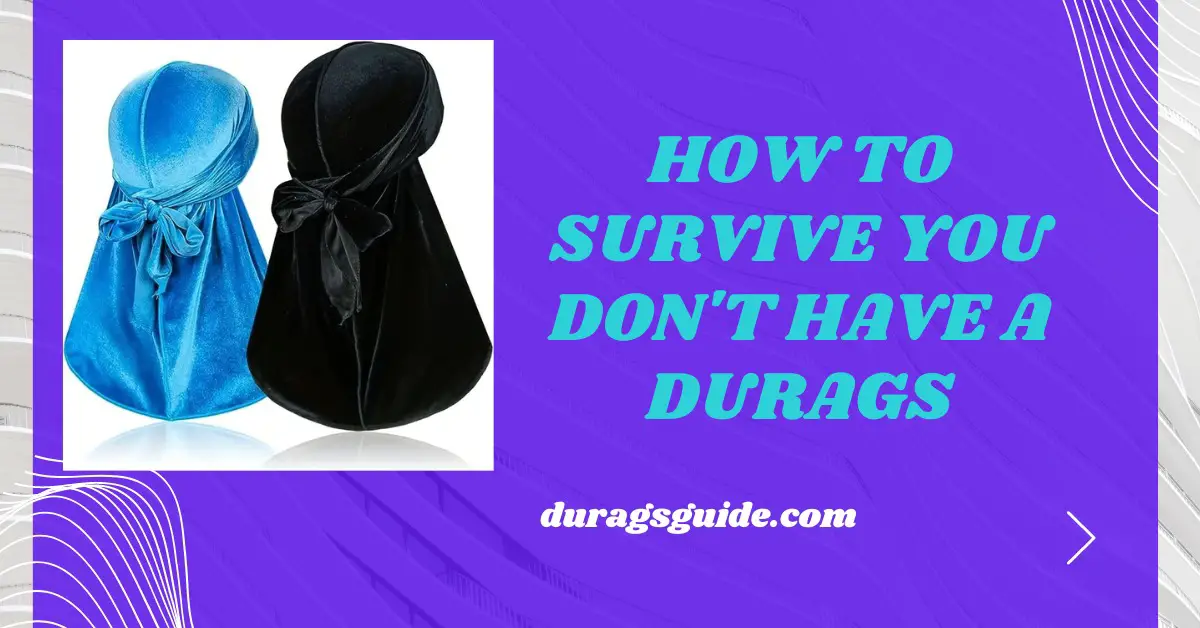Introduction
In a world where a durag is often a go-to accessory for hair care and style, finding yourself without one can be daunting. However, fear not! This article will guide you through practical strategies and creative alternatives to help you navigate the challenges of hair management of how to survive when you don’t have a durag at your disposal. From improvising head coverings to maintaining scalp health, we’ve got you covered. Let’s dive in and discover how to survive and thrive without a durag.
Improvising Head Coverings
When you find yourself without a durag, improvising head coverings can provide temporary relief and protection for your hair and scalp. Here are some creative alternatives:
- Bandanas: Wrap a bandana around your head, tying it securely to keep your hair in place and shield your scalp from the elements.
- Scarf or Shawl: Use a scarf or shawl to cover your head, tying it in various styles such as a turban or headwrap for a chic and functional look.
- T-shirt or Cloth: Cut a clean T-shirt or cloth into strips and tie them around your head, creating a makeshift headband or covering to keep your hair secure.
- Hats or Caps: Utilize hats or caps to cover your head, providing both style and protection from the sun and wind.
- Hoodies or Hooded Jackets: Pull up the hood of a hoodie or hooded jacket to cover your head and keep your hair in place while providing additional warmth.
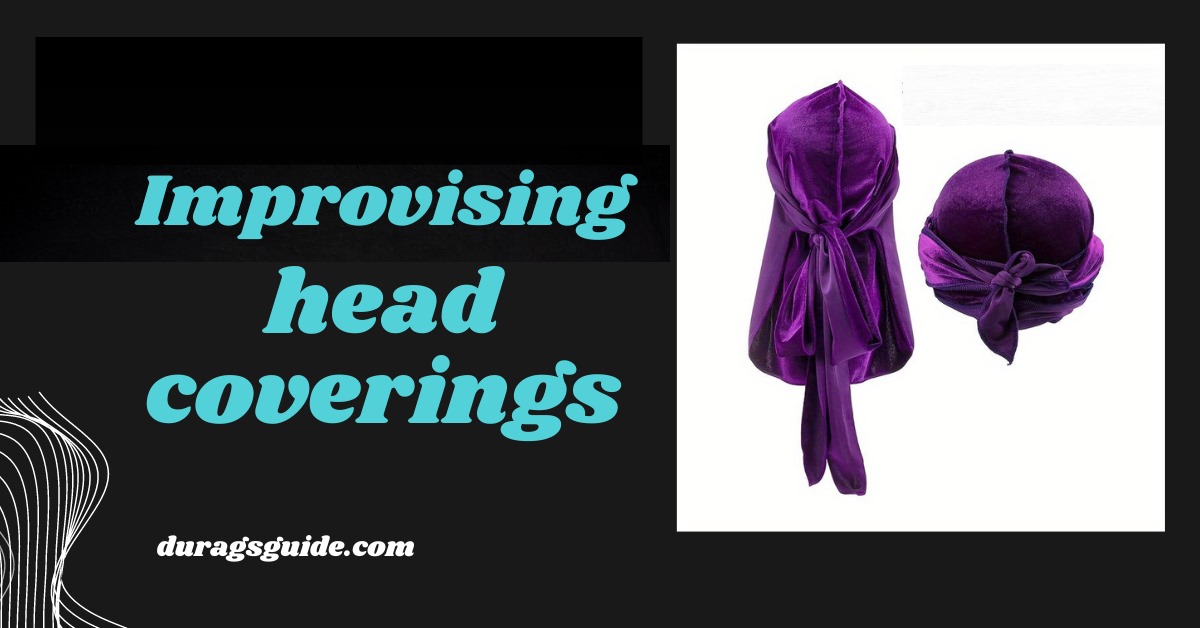
Protective Hairstyling Techniques
In the absence of a durag, implementing protective hairstyling techniques can help minimize damage and maintain the health of your hair. Consider the following strategies:
- Braids or Twists: Braiding or twisting your hair can help protect it from environmental stressors and reduce tangles, keeping your hair neat and manageable.
- Low Manipulation Styles: Opt for hairstyles that require minimal manipulation, such as buns, ponytails, or twists, to prevent excessive pulling and breakage.
- Moisturizing Treatments: Apply moisturizing treatments to your hair to keep it hydrated and nourished, reducing the risk of dryness and damage.
- Silk or Satin Scarves: Use silk or satin scarves to wrap your hair at night, reducing friction and preserving moisture while you sleep.
- Avoiding Heat Styling: Minimize the use of heat styling tools such as flat irons or curling wands, as excessive heat can lead to hair damage and breakage.
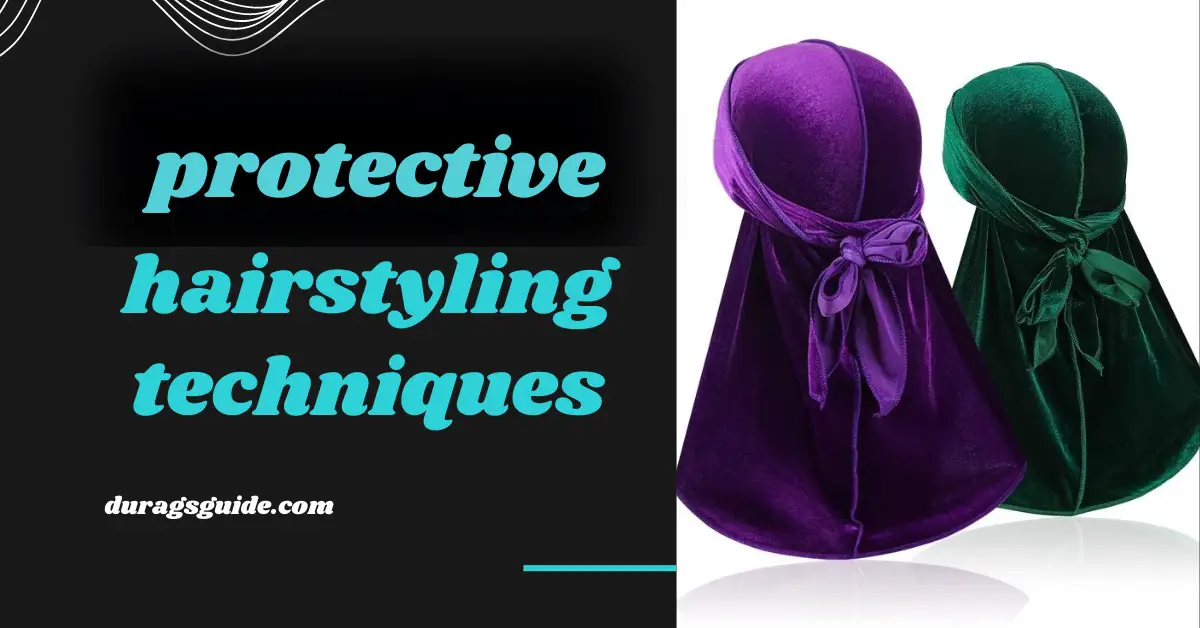
Sun Protection Strategies
Without the protection of a durag, it’s important to take proactive measures to shield your scalp and hair from the sun’s harmful rays. Here are some effective sun protection strategies:
- Wear a Hat: Invest in a wide-brimmed hat or cap to provide shade and coverage for your scalp, reducing the risk of sunburn and damage to your hair.
- Apply Sunscreen: Use a sunscreen specifically formulated for the scalp and hairline to protect these sensitive areas from sunburn and UV damage.
- Seek Shade: Whenever possible, seek shade or take breaks indoors to minimize direct exposure to the sun during peak hours when UV rays are strongest.
- Cover with Clothing: Wear lightweight, breathable clothing that covers your head and neck, providing additional protection from the sun’s rays.
- Reapply Protection: Remember to reapply sunscreen and adjust your head covering as needed throughout the day, especially after swimming or sweating.
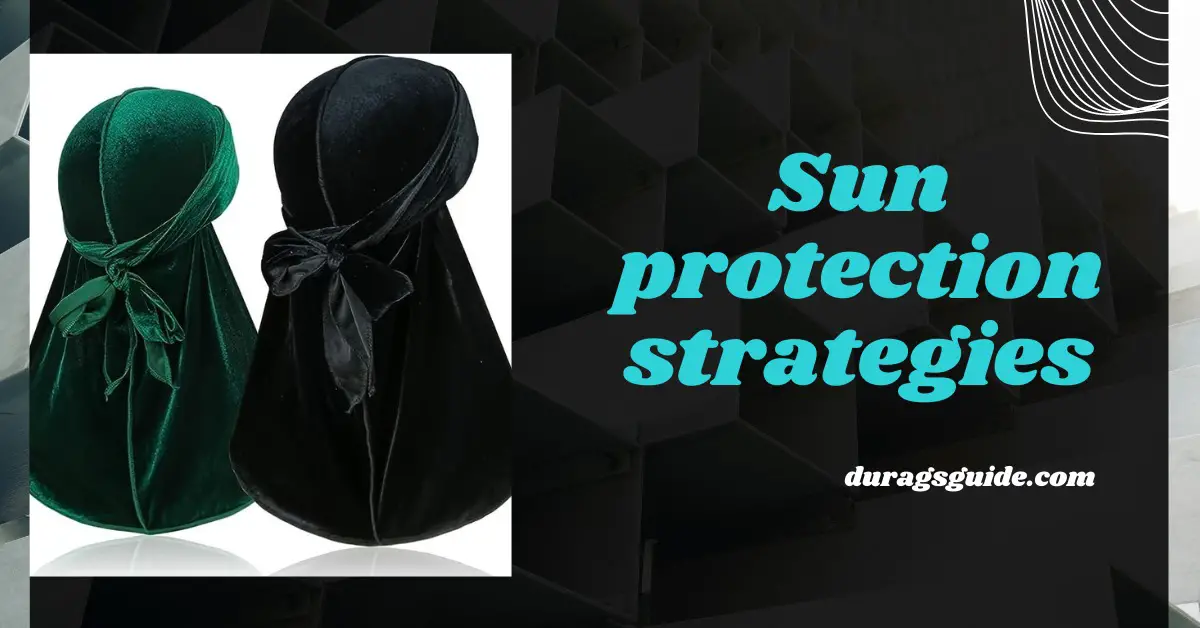
Minimizing Hair Damage
In the absence of a durag, it’s essential to take steps to minimize hair damage and promote overall hair health. Here are some effective ways to achieve this:
- Gentle Detangling: Use a wide-tooth comb or your fingers to gently detangle your hair, starting from the ends and working your way up to the roots to prevent breakage.
- Avoid Tight Hairstyles: Refrain from tightly pulling your hair back into styles such as tight ponytails or braids, as this can cause stress on the hair follicles and lead to breakage.
- Limit Chemical Treatments: Minimize the use of harsh chemical treatments such as perms or relaxers, as these can weaken the hair shaft and increase the risk of damage.
- Hydrate and Condition: Keep your hair hydrated and well-conditioned by using moisturizing shampoos and conditioners, as well as deep conditioning treatments to nourish and strengthen the hair.
- Protective Styles: Opt for protective hairstyles such as twists, braids, or buns that keep the ends of your hair tucked away and reduce exposure to environmental stressors.
- Trim Regularly: Schedule regular hair trims to remove split ends and prevent them from traveling up the hair shaft, promoting healthier, stronger hair growth.
Managing Hair in Windy Conditions
When facing windy conditions without the protection of a durag, it’s important to take proactive steps to manage your hair and prevent tangles and damage. Here are some strategies for managing your hair in windy conditions:
- Secure Hairstyles: Opt for hairstyles that are securely fastened, such as braids, twists, or buns, to minimize the risk of your hair becoming tangled or unruly in the wind.
- Use Hair Accessories: Utilize hair accessories such as clips, pins, or hair ties to keep your hair in place and prevent it from being blown around by the wind.
- Apply Hair Oil or Serum: Apply a small amount of hair oil or serum to your hair to help weigh it down and reduce flyaways and frizz caused by the wind.
- Wear a Headscarf or Bandana: Wrap a headscarf or bandana around your head to provide an additional layer of protection against the wind and keep your hair secure.
- Tuck Hair Under Clothing: If possible, tuck your hair under your clothing, such as a jacket or scarf, to protect it from the wind and minimize tangling.
- Avoid Excessive Brushing: Refrain from brushing or combing your hair excessively in windy conditions, as this can cause further tangles and damage.
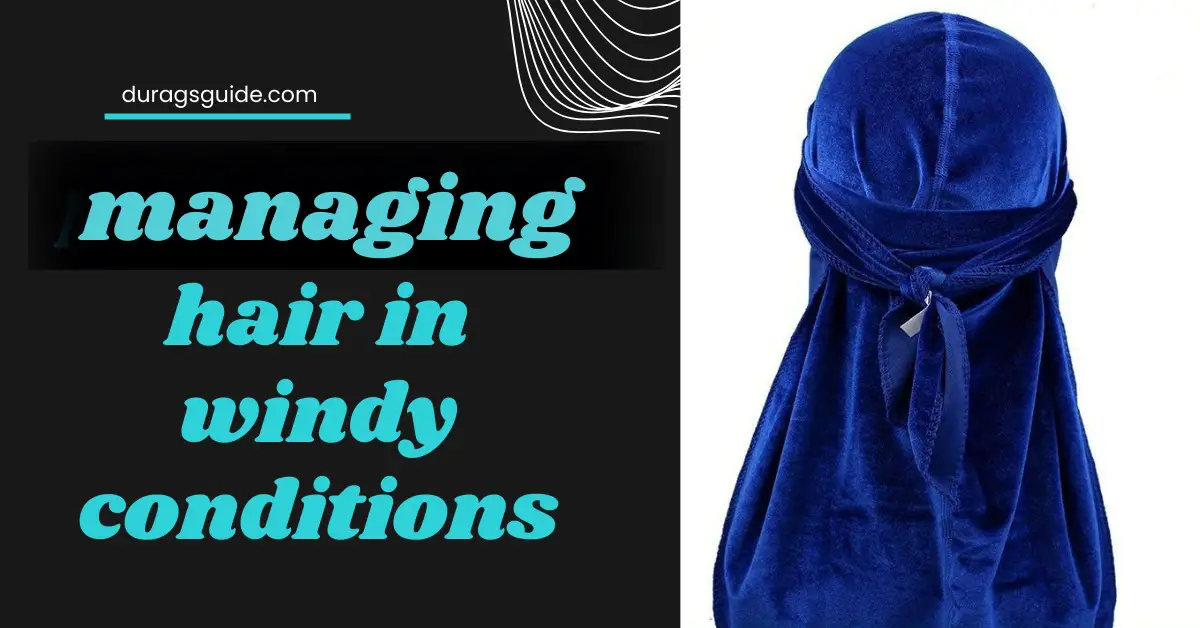
Maintaining Scalp Health
Without the protection of a durag, it’s important to pay attention to scalp health to prevent issues such as dryness, irritation, and sunburn. Here are some tips for maintaining scalp health:
- Regular Cleansing: Wash your scalp regularly with a gentle shampoo to remove dirt, oil, and product buildup, promoting a healthy environment for hair growth.
- Moisturize: Keep your scalp moisturized by applying a lightweight, non-greasy scalp oil or moisturizer to prevent dryness and flakiness.
- Protect from the Sun: Shield your scalp from the sun’s harmful UV rays by wearing a hat or applying sunscreen specifically formulated for the scalp.
- Massage: Gently massage your scalp with your fingertips to stimulate blood flow and promote circulation, which can help nourish the hair follicles and support healthy hair growth.
- Avoid Harsh Chemicals: Minimize the use of harsh hair care products and chemical treatments that can strip the scalp of its natural oils and lead to irritation.
- Monitor for Irritation: Keep an eye out for signs of scalp irritation, such as redness, itching, or flaking, and take steps to address any issues promptly.
- Hydrate: Drink plenty of water to stay hydrated, as dehydration can affect scalp health and contribute to dryness and discomfort.
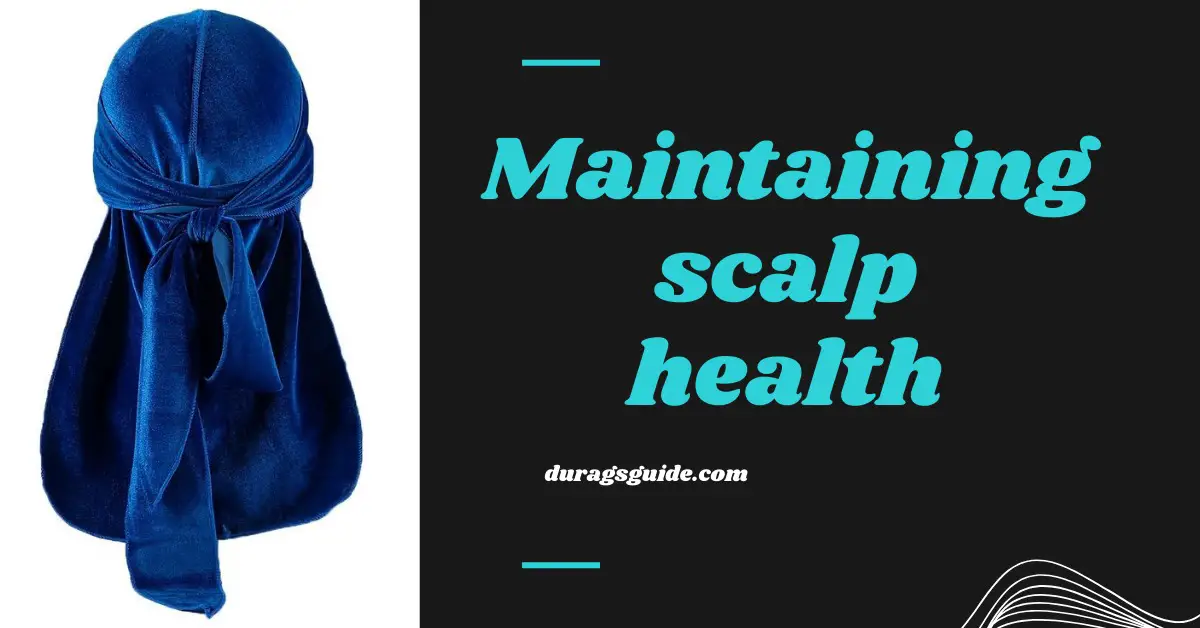
Practical Haircare Tips
In the absence of a durag, implementing practical haircare tips can help you manage your hair effectively and maintain its health and appearance. Here are some useful tips to consider:
- Use a Satin or Silk Pillowcase: Sleeping on a satin or silk pillowcase can help reduce friction and prevent hair breakage and tangles while you sleep.
- Detangle with Care: Use a wide-tooth comb or detangling brush to gently detangle your hair, starting from the ends and working your way up to the roots to prevent breakage.
- Limit Heat Styling: Minimize the use of heat styling tools such as flat irons or curling irons, as excessive heat can damage the hair and lead to dryness and breakage.
- Protective Styling: Opt for protective hairstyles such as braids, twists, or buns to keep your hair tucked away and shielded from environmental stressors.
- Trim Regularly: Schedule regular hair trims to remove split ends and prevent them from traveling up the hair shaft, promoting healthier, stronger hair growth.
- Stay Hydrated: Drink plenty of water to stay hydrated, as hydration is essential for maintaining healthy hair and scalp.
- Eat a Balanced Diet: Incorporate nutrient-rich foods into your diet, such as fruits, vegetables, and lean proteins, to provide your hair with the vitamins and minerals it needs to thrive.
- Protect from Environmental Stressors: Wear a hat or headscarf when exposed to harsh weather conditions such as wind, sun, or extreme temperatures to protect your hair from damage.
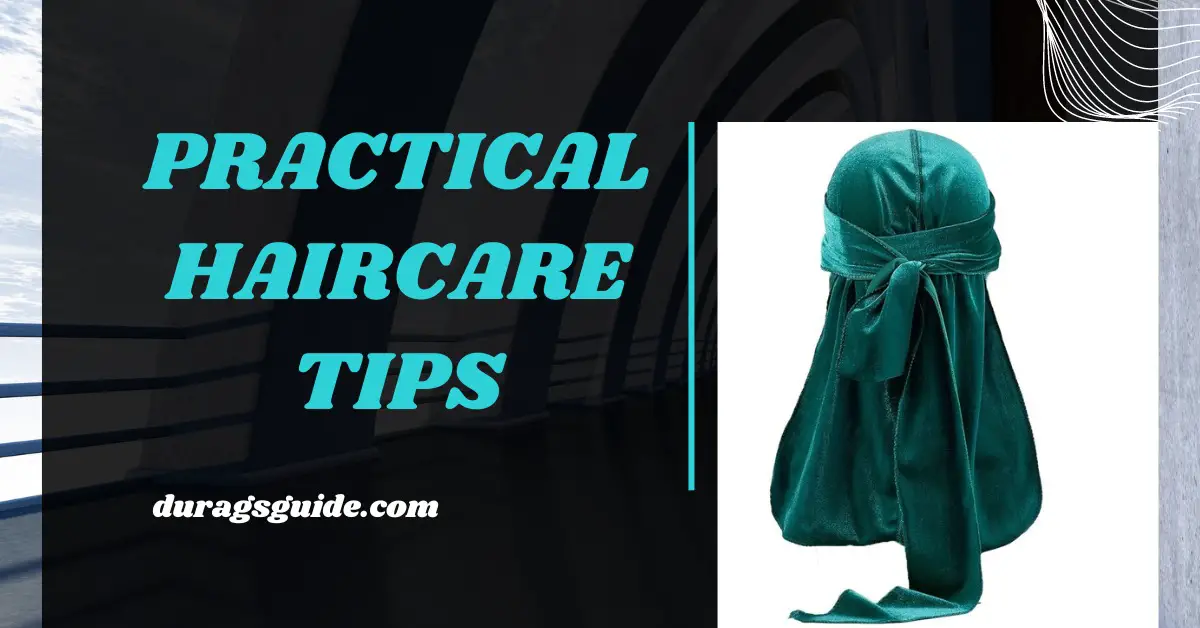
Creative Hair Accessories
In the absence of a durag, incorporating creative hair accessories can add flair to your hairstyle while also providing practical benefits. Here are some inventive hair accessories to consider:
- Head Wraps: Experiment with colorful head wraps or scarves to add a pop of color to your hairstyle while also protecting your hair from the elements.
- Hair Clips and Pins: Use decorative hair clips or pins to accessorize your hairstyle and keep your hair in place, whether you’re wearing it up or down.
- Hair Bands and Headbands: Choose stylish hair bands or headbands to add a touch of elegance to your hairstyle while also keeping your hair neatly in place.
- Hair Cuffs and Rings: Try incorporating hair cuffs or rings into your hairstyle for a unique and edgy look that adds a touch of glamour to your hair.
- Bows and Ribbons: Add a feminine touch to your hairstyle with bows or ribbons, whether tied around a ponytail or used to adorn a bun or braid.
- Braided Accessories: Experiment with braided accessories such as braided headbands or hair wraps to add texture and interest to your hairstyle.
- Feathers and Beads: Incorporate feathers or beads into your hairstyle for a bohemian-inspired look that adds a playful and whimsical touch to your hair.
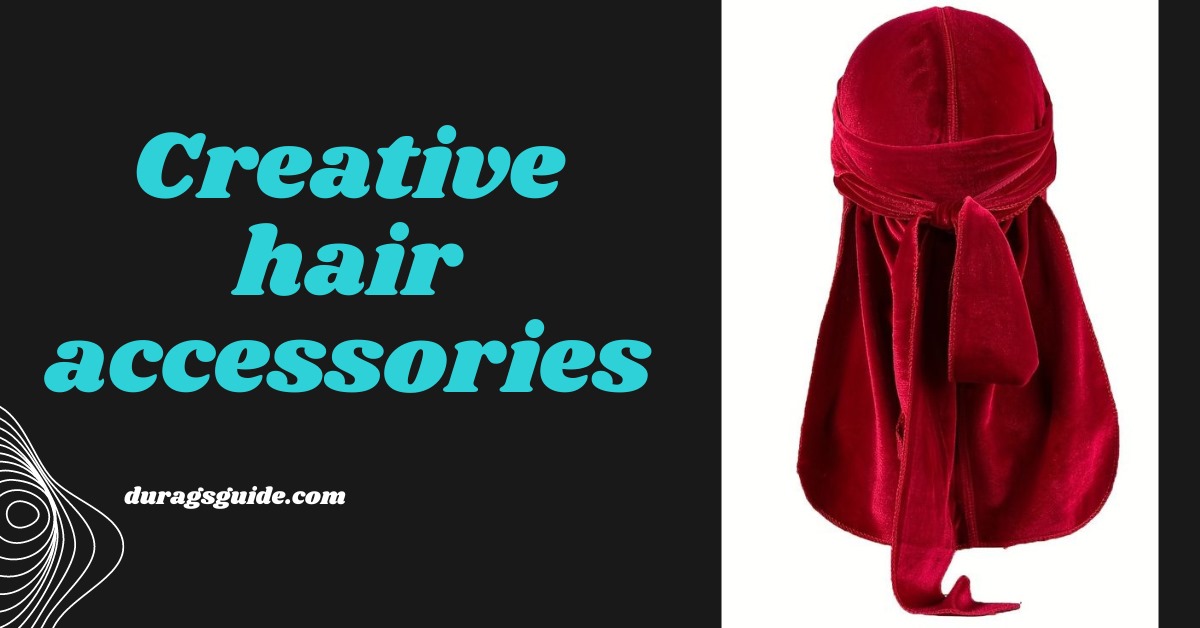
Coping with Hair Emergencies
Without a durag, unexpected hair emergencies can arise, but with the right strategies, you can effectively address them. Here are some tips for coping with hair emergencies:
- Frizz Control: If your hair becomes frizzy, smooth it down with a small amount of hair oil or serum, focusing on the ends to tame flyaways and restore shine.
- Tangled Hair: Use a detangling spray or conditioner to gently loosen knots and tangles, then carefully comb through your hair with a wide-tooth comb to avoid breakage.
- Greasy Roots: Absorb excess oil from your scalp and roots by applying dry shampoo or baby powder, then brush through your hair to distribute the product evenly and refresh your hairstyle.
- Flat Hair: Add volume to flat hair by lifting sections of hair at the roots and spraying with a volumizing spray or texturizing spray to create lift and body.
- Hair Breakage: If you notice signs of hair breakage, such as split ends or weak strands, consider using a strengthening treatment or protein mask to help repair and fortify your hair.
- Scalp Irritation: If your scalp becomes irritated or itchy, apply a soothing scalp serum or oil to calm inflammation and restore balance to your scalp’s natural pH levels.
- Emergency Hairstyles: Learn a few quick and easy hairstyles that you can create on the go, such as a simple bun, ponytail, or braid, to help you look polished and put-together in any situation.
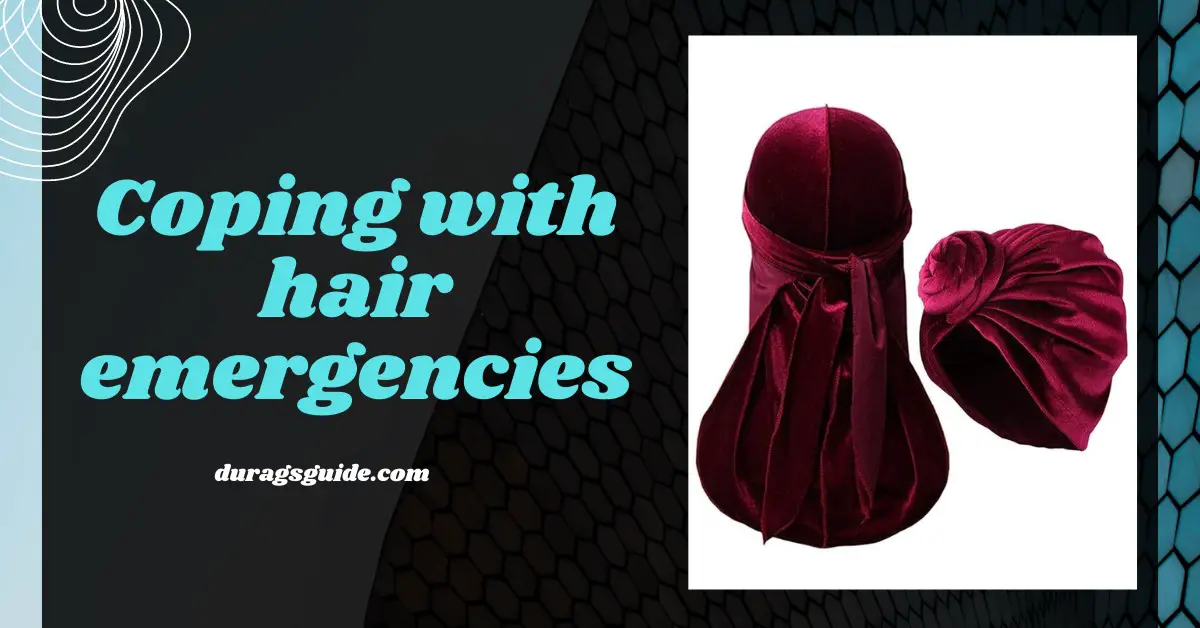
Psychological Resilience without a Durag
While a durag may offer physical benefits, it’s important to recognize the psychological aspects of haircare and self-image, especially when facing challenges without one. Here are some strategies for maintaining psychological resilience:
- Self-Acceptance: Embrace your natural hair texture and appearance, recognizing that beauty comes in many forms and that your worth is not determined by the presence or absence of a durag.
- Adaptability: Cultivate a mindset of adaptability and flexibility, recognizing that haircare routines may need to be adjusted based on circumstances and availability of resources.
- Creativity: Tap into your creativity and resourcefulness to find alternative solutions for managing your hair, whether it’s through makeshift head coverings, creative hairstyles, or innovative haircare techniques.
- Confidence: Focus on building confidence from within, rather than relying solely on external factors such as accessories or hairstyles, recognizing that true confidence comes from self-assurance and self-acceptance.
- Community Support: Seek support from friends, family, or online communities who can offer encouragement, advice, and solidarity in navigating haircare challenges without a durag.
- Mindfulness: Practice mindfulness and self-care techniques to manage stress and anxiety related to haircare concerns, recognizing that taking care of your mental and emotional well-being is just as important as caring for your hair.
- Resilience: Cultivate resilience by acknowledging setbacks and challenges as opportunities for growth and learning, recognizing that overcoming adversity without a durag can build strength and resilience over time.
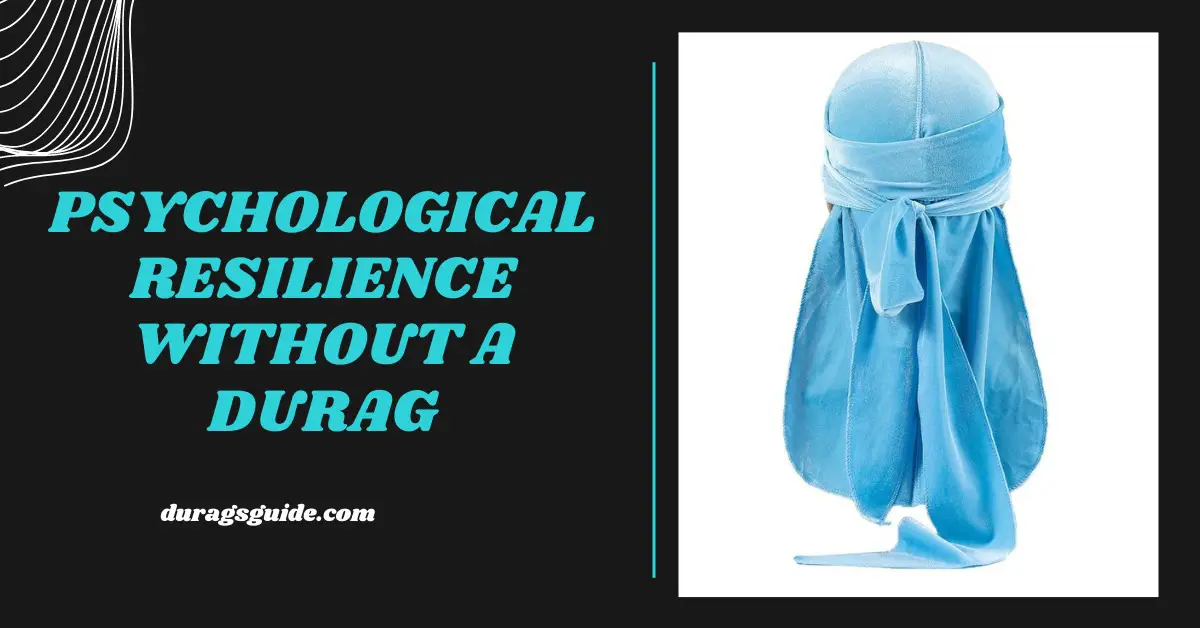
How to Survive When You Don’t Have a Durag
| Survival Tips Without a Durag |
| Improvising Head Coverings |
| Utilize items like bandanas or T-shirts to fashion makeshift head coverings. Try different tying techniques for added style. |
| Protective Hairstyling Techniques |
| Opt for braids, twists, or low buns to minimize manipulation and protect your hair. Use satin or silk wraps at night. |
| Sun Protection Strategies |
| Wear wide-brimmed hats or use sunscreen for scalp protection against UV rays. |
| Minimizing Hair Damage |
| Handle hair gently, avoid tight styles, and use moisturizing products. Limit heat styling. |
| Managing Hair in Windy Conditions |
| Secure hair with accessories and choose wind-resistant hairstyles like braids. |
| Maintaining Scalp Health |
| Keep scalp clean and moisturized with gentle products. Practice scalp massage for circulation. |
| Practical Haircare Tips |
| Use satin/silk pillowcases and limit heat tools. Learn heat-free hairstyles. |
| Creative Hair Accessories |
| Experiment with headbands, clips, or scarves for flair. Try beads or feathers for unique accents. |
| Coping with Hair Emergencies |
| Keep dry shampoo or hair oil handy. Learn quick and easy hairstyles for emergencies. |
| Psychological Resilience |
| Embrace natural hair, focus on inner confidence, and seek support from loved ones. |
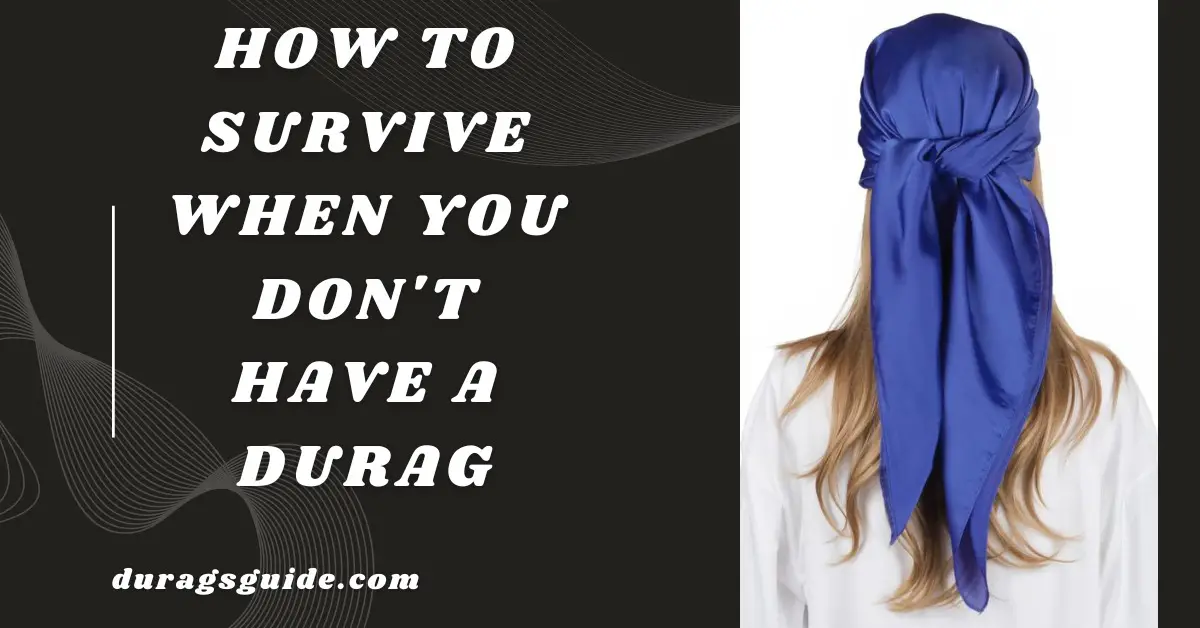
Some unique tips on how to survive without a durag
- Bandana Braid Wrap: Use a colorful bandana to wrap around your head, securing it in place with a stylish braid for a chic and functional look.
- DIY Hair Perfume: Create your own hair perfume by mixing a few drops of your favorite essential oils with water in a small spray bottle. Spritz onto your hair to keep it smelling fresh all day long.
- Hair Mask Hack: Whip up a quick hair mask using ingredients like mashed avocado, honey, and coconut oil. Apply to damp hair, cover with a shower cap, and let it sit for 30 minutes before rinsing for silky-smooth locks.
- Bedazzled Bobby Pins: Embellish plain bobby pins with rhinestones or beads for a touch of glamour. Use them to pin back sections of hair or create intricate designs for added flair.
- Satin Pillowcase Pillow Talk: Invest in a satin pillowcase not just for your hair, but also for your skin. The smooth surface reduces friction, preventing hair breakage and minimizing the appearance of sleep lines on your face.
- Hairband Storage Solution: Repurpose a decorative basket or tray to neatly store your collection of hairbands and accessories. Not only does it keep everything organized, but it also adds a stylish touch to your vanity or dresser.
- Dry Shampoo DIY: Make your own dry shampoo by combining cornstarch with cocoa powder for dark hair or arrowroot powder for light hair. Apply to your roots and massage in to absorb excess oil and add volume between washes.
- Scarf Scrunchie Combo: Transform a silk scarf into a versatile scrunchie by tying it around a regular hair elastic. Use it to create effortless ponytails, buns, or even secure your makeshift bandana wrap in place.
- Hair Yoga: Practice gentle scalp massages and inverted yoga poses to stimulate blood flow to the scalp and promote healthy hair growth. Incorporating yoga into your routine not only benefits your body but also your hair health.
- Affirmation Mirror Messages: Write positive affirmations or compliments on sticky notes and attach them to your bathroom mirror. Seeing these uplifting messages while you style your hair can boost your confidence and mood for the day.
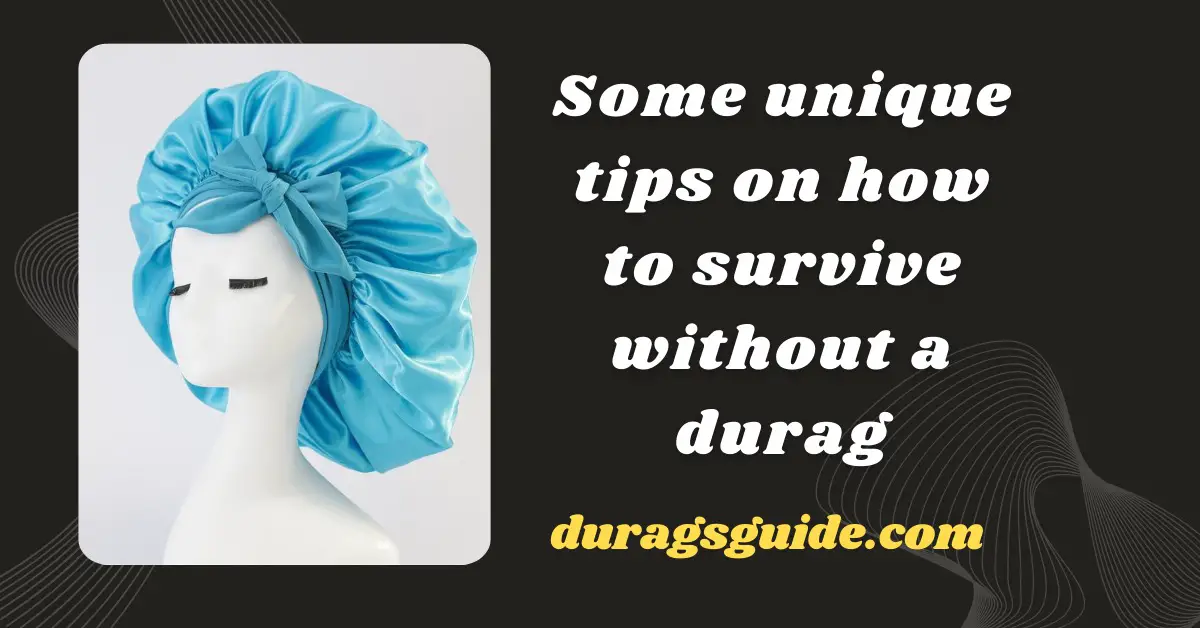
Conclusion
In conclusion, while a durag may be a convenient accessory for maintaining hair health and style, there are numerous ways to navigate the challenges of haircare without one. By improvising with makeshift head coverings, practicing protective hairstyling techniques, and implementing practical haircare tips, individuals can effectively manage their hair and maintain their desired look, even in the absence of a durag. Additionally, embracing psychological resilience and seeking support from loved ones can further empower individuals to feel confident and comfortable with their hair, regardless of the circumstances. Ultimately, with creativity, resourcefulness, and a positive mindset, surviving without a durag becomes not only manageable but also an opportunity for personal growth and self-expression.
FAQS
Instead of a durag, you can use alternatives like bandanas, scarves, or even T-shirts to fashion makeshift head coverings that offer protection and style. Additionally, opting for protective hairstyles like braids, twists, or low buns can help maintain your hair without the need for a durag. Sleeping without a durag depends on personal preference and hair care needs. While some people find durags beneficial for preserving hairstyles and minimizing frizz, others may prefer to sleep without them to allow their hair to breathe and prevent discomfort. To get waves without a durag, brush your hair regularly with a wave brush, moisturize with a hair pomade or cream, and wear a satin or silk scarf while sleeping to maintain the wave pattern without the need for a durag. Having a durag is not necessary for everyone, as maintaining hair health and style can be achieved through alternative methods such as protective hairstyles, regular brushing, and proper hair care products. However, some individuals find durags helpful for preserving hairstyles, minimizing frizz, and creating defined waves or curls. Ultimately, the necessity of a durag depends on personal preference and hair care goals.What can I use instead of durag?
Should I sleep without a durag?
How to get waves with no durag?
Is it necessary to have a durag?
